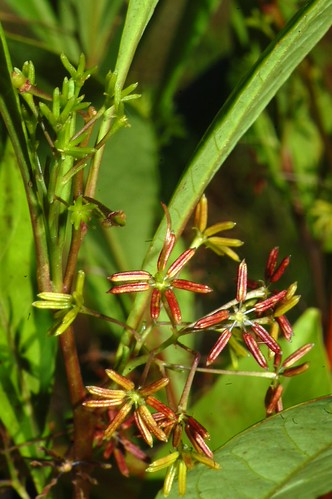
Dodonaea triquetra is a shrub of wet eucalypt forest, typically at the more open canopied spectrum of the habitat. This is one of a few native species of Hop Bush and I find this species particularly interesting because it is reputed to be an obligate seeder in an environment that most of the inhabitant plants require fire for regeneration. This means that in the event of a fire, Dodonaea triquetra will get killed and has no ability to resprout. This being the case, it must have some means to regenerate after fire if it is to maintain a healthy population in a given locality.
Nature takes care of itself in ways we cannot see or understand. Even with man-made fires sweeping through some areas of wet eucalypt forest, Dodonaea triquetra may still be seen here and there.
With just leaves, the species is probably quite difficult to tell apart from other similar species of Dodonaea, but I must admit that it is my shortcoming that I haven’t spent a good amount of time getting to know this group of plants very well. I found that this particular species has a rather distinctive spread-out appearance to the stamens. The long elliptic leaves and slightly dull underside combined with the habitat context also helps.
The species may also have some medicinal properties that await further examination.
May the Dodonaea be in fruit the next time I meet.































